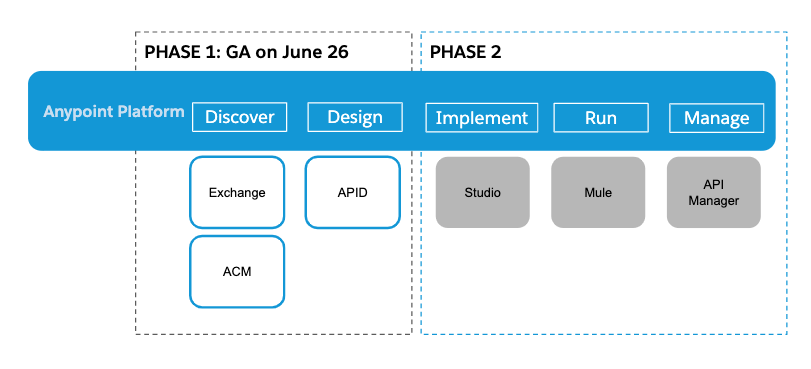As organizations expand access to their services by productizing APIs and exposing them through developer portals, developers are looking for easy ways to understand and consume these APIs. API description formats like the RESTful API Modeling Language (RAML) and the OpenAPI Specification (OAS) provide a way for users to understand and interact with these services without needing to understand the underlying implementation logic.
Today, we are pleased to announce OAS 3 support for the design and discovery journey in Anypoint Platform. This release enables support for cataloging and editing existing API specs in the OAS 3 format to drive partner and customer adoption of APIs.
What is being released?
The OAS 3 adoption to Anypoint Platform will be offered in two phases:

Phase 1: Design (API Designer) and discovery (Exchange, API Community Manager)
Phase 2: Runtime (Mule runtime), implementation (Studio), and management (API Manager)
With the release of Phase 1 support in the platform, users can import, edit, mock, and simulate calls to OAS 3 specifications in API Designer, and publish to Exchange or API Community Manager for collaboration and reuse.
So why is MuleSoft supporting OAS 3?
Organizations are looking to adopt industry standards, meet any regulatory requirements, and enable code-first developers to generate API specs with the rich open-source ecosystem of OAS tooling. Let’s review the reasons why MuleSoft is looking to support OAS 3.
First, adopting industry standards. We recognize that, although RAML is the favored API description language by MuleSoft developers, OAS has greater adoption overall in the market. Because of this, we want developers to be able to choose the API specifications format they prefer and adopt industry standards like OAS 3.
Next, we’ve seen over the last year or so a number of customers requesting OAS 3 due to regulatory requirements. There are a number of requirements in financial services, manufacturing, and retail that require the adoption of OAS 3 for compliance concerns. We understand it’s critical for our customers to meet these requirements.
Finally, supporting OAS 3 will enable code-first developers to take advantage of all the benefits Anypoint Platform has to offer. MuleSoft has always been supportive of the design-first approach when taking an API-led approach to integration, but we recognize that a large number of developers prefer the code-first approach when building APIs. By supporting OAS 3, we can enable code-first developers to take advantage of the rich open-source ecosystem of OAS tooling. For example, tools like open-API generator, that generate client SDKs from OAS 3 specifications.
Who is using OAS 3 from Mulesoft?
Many MuleSoft customers are internally aligning and standardizing on OAS 3. They are unifying and cataloging all of their APIs across the organization into a single developer portal to encourage discoverability and reuse. And specifically, they want to standardize and expose these APIs with OAS 3 to drive partner and customer adoption.
Salesforce is one of these customers. In previous blogs, we’ve talked about how Salesforce has used MuleSoft technology to streamline employee onboarding and build reusable assets for a more seamless M&A process. Most recently, Salesforce has moved into the B2C headless commerce architecture — decoupling the infrastructure layer and APIs for faster, asynchronous development. To drive further agility for customers, Salesforce created a developer center to promote its APIs and engage the developer ecosystem — leveraging MuleSoft’s API Community Manager. In the coming months, Salesforce plans to take advantage to standardize on OAS 3 specifications to further drive API adoption with this release.
Get started?
Log into the Anypoint Platform today to get started with OAS 3. Visit the documentation for the full list of capabilities and enhancements.









